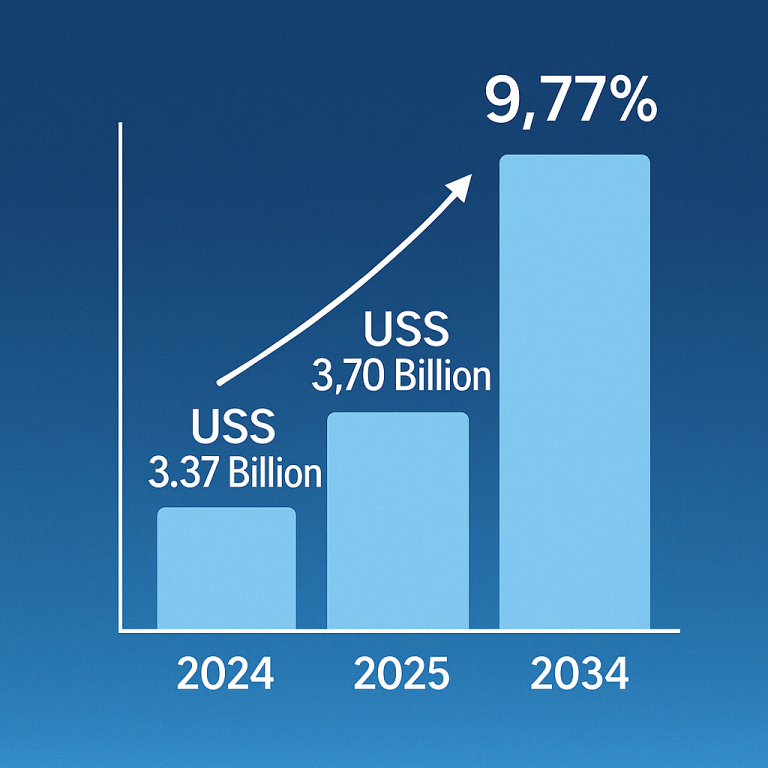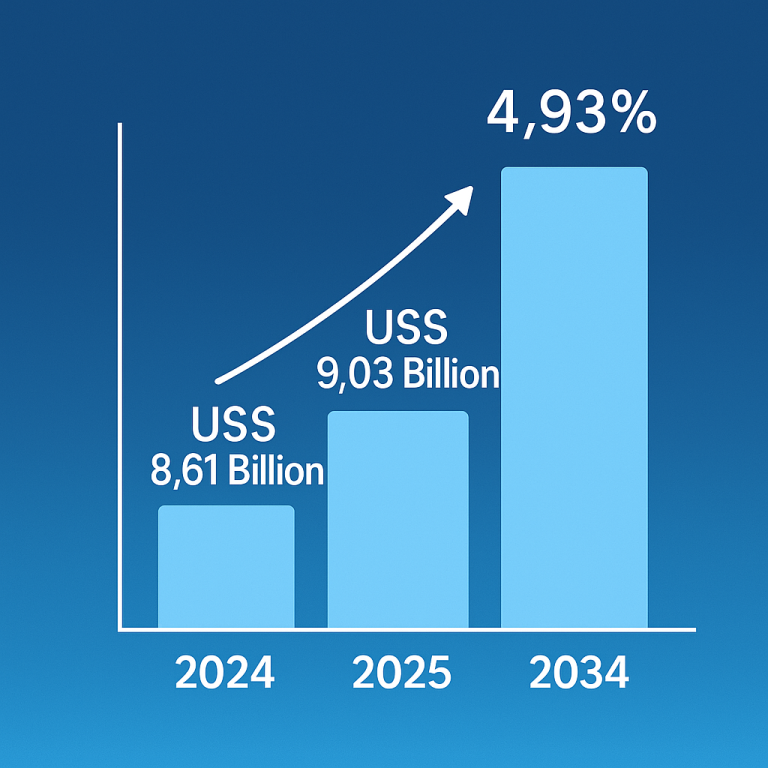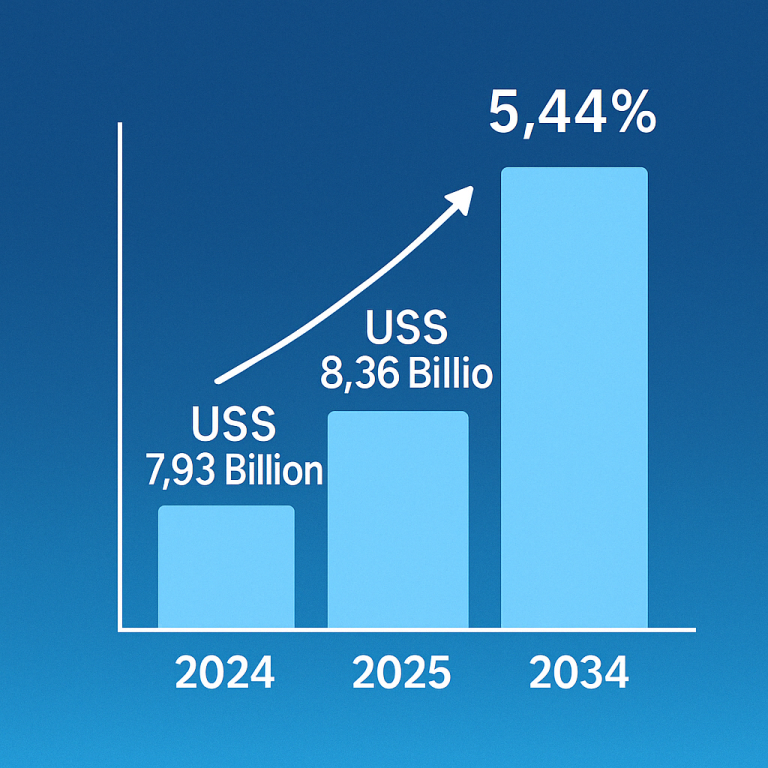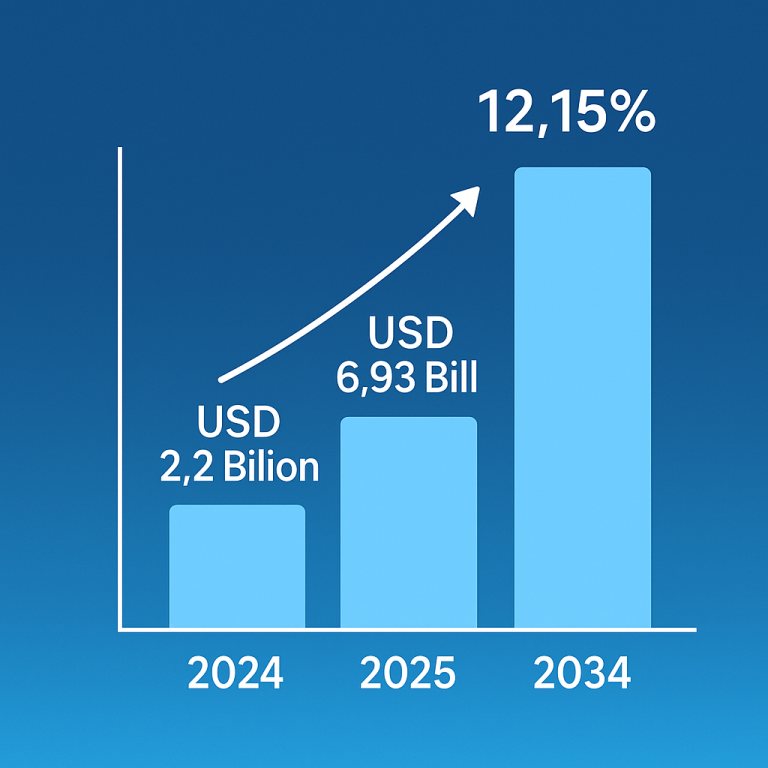
Growth and Outlook of the AI in Medical Coding Market (2024 – 2032)
The global market for AI in medical coding is expected to grow significantly, rising from USD 2.06 billion in 2022 to over USD 7.15 billion by 2032. This growth represents a compound annual growth rate (CAGR) of 13.3% from 2023 to 2032, driven by the increasing adoption of advanced technologies in the healthcare industry.
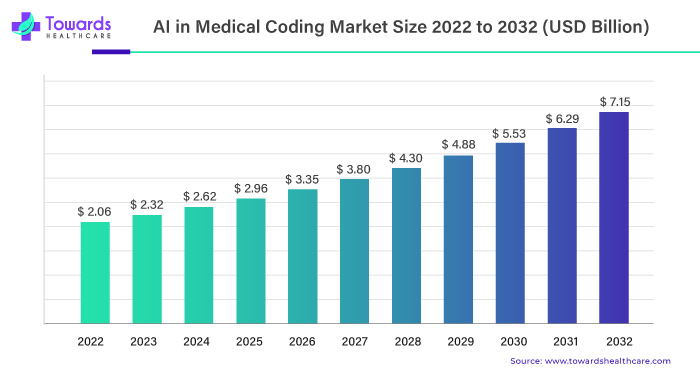
Download statistics of this report @ https://www.towardshealthcare.com/download-statistics/5090
AI in Medical Coding Market: Growth, Challenges, and Future Trends (2024 – 2032)
Key Insights:
- North America led the AI in medical coding market in 2021, with the Asia Pacific region expected to experience the fastest growth.
- The U.S. faces a significant shortage of medical coders, with a 30% gap nationwide.
- AI is poised to transform medical coding due to its ability to handle large data volumes and increase accuracy.
AI’s Role in Improving Medical Coding Efficiency:
The rapid growth of electronic health records (EHR) and digital health technologies has led to an overwhelming increase in healthcare data. AI systems are able to process these large datasets quickly, improving efficiency in medical coding. This not only saves time but also helps healthcare providers manage the ever-growing volume of patient data. As healthcare data continues to expand, AI offers scalability to handle larger datasets without needing proportional increases in resources. This scalability is essential for accommodating larger patient populations and the rising volume of health information.
AI also adapts quickly to changes in coding guidelines and regulations, helping healthcare providers stay compliant and reducing the risk of penalties. Additionally, AI systems improve quality assurance by cross-referencing coded data against standards, ensuring the highest accuracy in coding processes.
The accuracy and efficiency that AI offers are vital as the healthcare industry increasingly digitizes. With AI, medical coding becomes more precise, timely, and scalable, benefiting providers, payers, and patients alike.
COVID-19 and the Surge in Demand for AI in Medical Coding:
The COVID-19 pandemic significantly increased the need for telehealth and digital health services, leading to a rise in demand for efficient coding systems. AI played a crucial role in ensuring accurate coding for virtual consultations and remote monitoring, contributing to the success of telehealth services.
As telehealth grew, concerns about patient data security and privacy became more prominent. The increased reliance on AI in medical coding brought attention to the need for robust data protection measures. Ensuring compliance with data security regulations, especially in telehealth and remote work environments, became a priority for healthcare organizations, driving investments in cybersecurity and privacy safeguards.
For instance:
- In 2020, the World Health Organization introduced new ICD-10 codes related to COVID-19 and telehealth, highlighting the need for adaptable coding systems in the face of emerging health issues.
- The adoption of the ICD-11 coding system, with around 55,000 codes, improved flexibility and scalability, supporting the integration of AI and EHR systems to better handle healthcare data.
- The pandemic also accelerated the use of AI in revenue cycle management, highlighting AI’s role in addressing the growing demand for medical coding.
Challenges: Data Privacy and Security Concerns
Despite its benefits, the integration of AI in medical coding faces significant challenges related to data privacy and security. Healthcare data often includes highly sensitive patient information, and maintaining its confidentiality is paramount. The risk of data breaches, cyber-attacks, or unauthorized access can have serious consequences, not only compromising patient privacy but also leading to legal and financial penalties.
AI’s role in automating and analyzing large amounts of patient data further intensifies these concerns. Ensuring that AI algorithms comply with stringent privacy standards, such as the Health Insurance Portability and Accountability Act (HIPAA) in the U.S., is a complex task that requires constant vigilance and updates. Moreover, ethical considerations around the transparency of AI algorithms and potential biases in decision-making processes must be addressed to ensure equitable access to healthcare services for all populations.
Striking the right balance between leveraging AI’s efficiency and safeguarding patient data while adhering to ethical standards is essential for the successful adoption of AI in medical coding. This will require collaboration between technology developers, healthcare providers, regulators, and ethicists to create comprehensive, secure, and ethical solutions.
Our Table of Content (TOC) covers key healthcare market segments, materials, technologies and trends—helping you navigate market shifts and make informed decisions: https://www.towardshealthcare.com/table-of-content/ai-in-medical-coding-market-size
Access exclusive insight now @ https://www.towardshealthcare.com/price/5090
We’ve prepared a service to support you. Please feel free to contact us at sales@towardshealthcare.com
Web: https://www.towardshealthcare.com
Visit Dental Specifics: https://www.towardsdental.com
Get the latest insights on industry segmentation with our Annual Membership: Get a Subscription
For Latest Update Follow Us: https://www.linkedin.com/company/towards-healthcare
